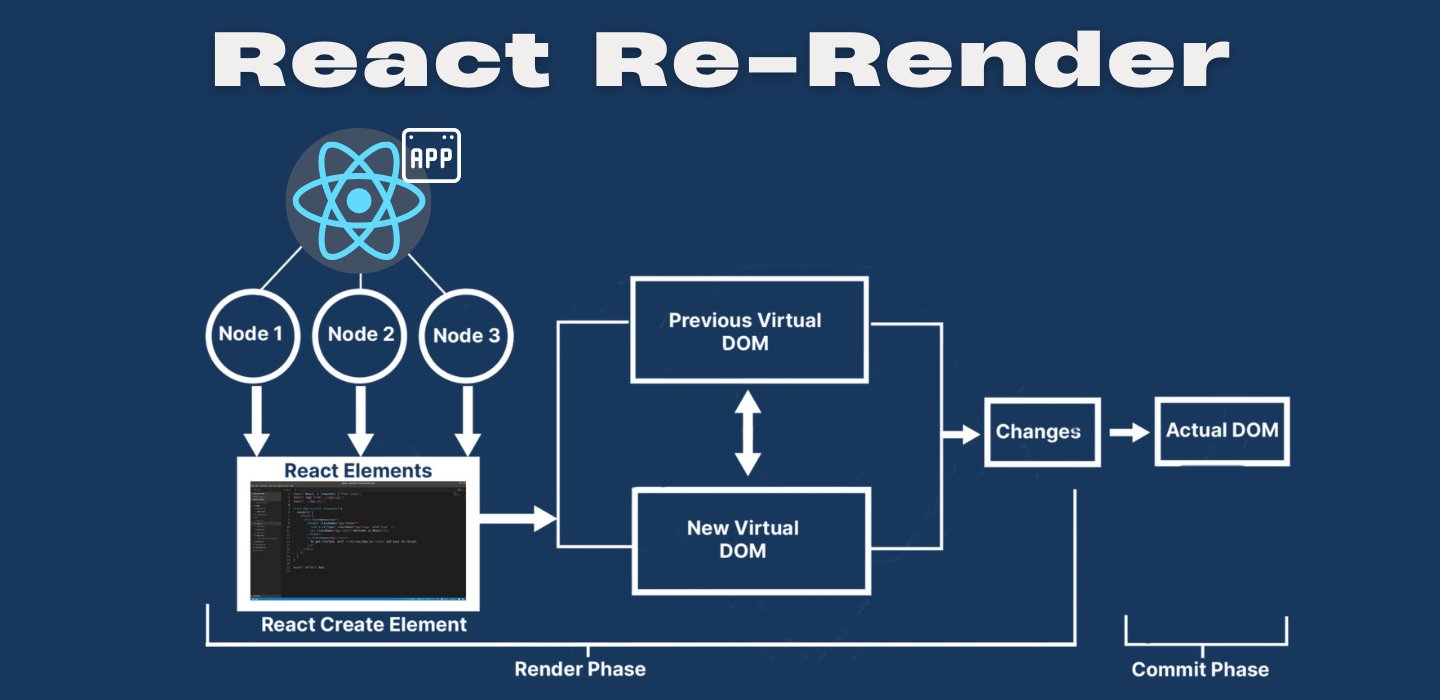Table Of Contents

How Does React Decide When to Re-Render a Component
Understanding when React triggers a re-render is critical for optimizing performance. React follows a predictable rendering cycle, but unnecessary re-renders can degrade efficiency. While React’s Virtual DOM helps optimize updates, misusing state, props, or context can lead to performance bottlenecks.
React re-renders components based on a few key factors. If developers do not understand these triggers, they may end up with inefficient components that slow down applications. Let’s break down how React decides when to re-render, how the reconciliation process works internally, and what best practices can help minimize unnecessary updates.
What Triggers a React Re-Render
State Changes
When useState or this.setState updates a component’s internal state, React schedules a re-render.
const [count, setCount] = useState(0);
const increment = () => {
setCount(count + 1); // This triggers a re-render
};However, React prevents re-renders when the new state value is the same as the previous one.
setCount(0); // No re-render if count is already 0Prop Changes
When a component receives new props from a parent, React re-renders it. Even if the new prop value is identical to the previous one, React still triggers a re-render unless the component is memoized.
function ParentComponent() {
const [count, setCount] = useState(0);
return <ChildComponent count={count} />;
}
function ChildComponent({ count }) {
return <p>Count: {count}</p>; // Re-renders when parent updates count
}
To prevent unnecessary renders, React.memo can be used to memoize functional components.
const ChildComponent = React.memo(({ count }) => {
return <p>Count: {count}</p>;
});Context Value Changes
When a component consumes a React Context, any change in the context value causes all consumers to re-render.
const ThemeContext = createContext();
function Parent() {
const [theme, setTheme] = useState("light");
return (
<ThemeContext.Provider value={theme}>
<Child />
</ThemeContext.Provider>
);
}
function Child() {
const theme = useContext(ThemeContext);
return <p>Current theme: {theme}</p>;
}To avoid unnecessary re-renders, context segmentation or selective subscriptions can be used with libraries like Zustand or Recoil.
Parent Component Re-Renders
Even if a child component does not use any of its parent’s state or props, React will still re-render the child when the parent re-renders.
function Parent() {
const [count, setCount] = useState(0);
return (
<div>
<button onClick={() => setCount(count + 1)}>Increment</button>
<Child />
</div>
);
}
function Child() {
console.log("Child re-rendered");
return <p>I do not depend on count</p>;
}Using React.memo prevents re-renders when the parent updates, but the child does not receive new props.
const Child = React.memo(() => {
console.log("Child re-rendered");
return <p>I do not depend on count</p>;
});React’s Internal Optimization Strategies
The Diffing Algorithm
React’s diffing algorithm ensures that only necessary updates are applied, avoiding full re-renders. It follows three key rules.
- Elements of the same type are compared → A
<div>that remains a<div>will have only its attributes updated instead of being replaced - Elements of different types are replaced → A
<p>changed to an<h1>will be fully replaced in the DOM - Keys in lists help track changes efficiently → Unique keys allow React to track elements in lists efficiently, avoiding unnecessary re-renders
Automatic Batching in React 18+
Previously, multiple state updates triggered separate re-renders.
setName("Sunil Sharma"); // First re-render
setAge(25); // Second re-render
From React 18 onward, React automatically batches updates to optimize performance.
setName("Sunil Sharma");
setAge(25");
// Single re-render instead of twoMemoization with useMemo and useCallback
Memoization optimizes expensive calculations and prevents unnecessary re-renders.
const computedValue = useMemo(() => {
return expensiveCalculation(data);
}, [data]);Similarly, useCallback memoizes functions so they do not get re-created on every render.
const handleClick = useCallback(() => {
console.log("Clicked");
}, []);How Reconciliation Works with React’s Fiber Architecture
The Evolution of React Fiber
React Fiber Architecture, introduced in React 16, changed how reconciliation works by making rendering asynchronous and interruptible.
Previously, React used synchronous rendering, meaning all updates had to be processed in one go, sometimes blocking the main thread and causing UI lag.
With Fiber, React can split rendering work into smaller units that can be paused, resumed, or prioritized based on user interactions.
Benefits of Fiber in Reconciliation
- Prioritization of important updates → User interactions are processed before background updates
- Smooth animations and transitions → Large UI updates are split into smaller chunks
- Support for concurrent rendering → React can process multiple UI updates in parallel
Handling Performance in Large-Scale Applications
Preventing Re-Renders in Data-Intensive UIs
In dashboards or real-time applications, frequent updates can lead to excessive re-renders. Techniques like windowing (React Virtualized), memoization, and selective context updates help minimize performance overhead.
Optimizing List Rendering
When dealing with large lists, use keys correctly to prevent unnecessary reconciliation.
Avoid using array indices as keys, as this can lead to incorrect re-renders when items change order.
{items.map(item => (
<Item key={item.id} data={item} />
))}How React’s Reconciliation Compares to Other Frameworks
React vs Vue
- Vue tracks dependencies more explicitly using a reactive system
- React’s Fiber enables concurrent rendering, while Vue updates synchronously
React vs Svelte
- Svelte eliminates the need for a Virtual DOM by compiling components into optimized JavaScript
- React relies on reconciliation to efficiently update UI, making it more scalable for dynamic applications
Final Thoughts
React’s rendering process is highly optimized, but inefficient use of state, props, or context can still lead to performance issues. By understanding:
- What triggers a re-render
- How React’s diffing algorithm and Fiber optimize updates
- How to use memoization and automatic batching effectively
Developers can significantly improve the performance of React applications.
If you are working on a performance-critical project, profiling re-render behavior using React Developer Tools is an essential step in fine-tuning efficiency.











